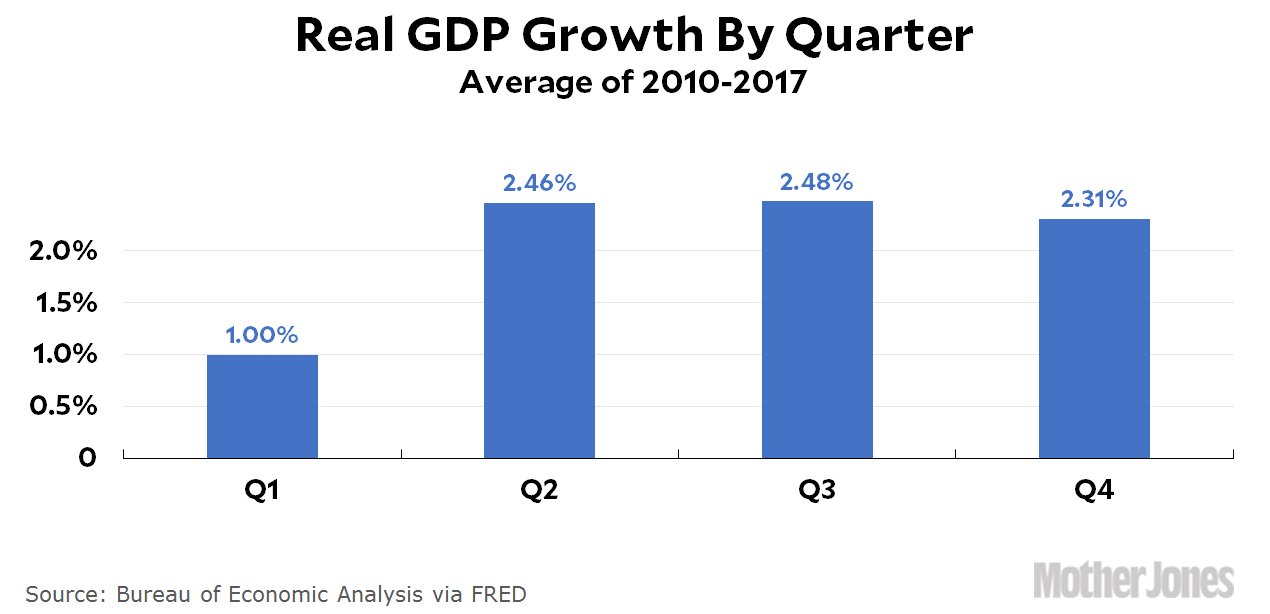A reader emailed this morning suggesting that GDP growth in the first quarter was low because GDP growth in the first quarter is always low:
Something I’ve long wondered is if the seasonal adjustments BLS is making on these numbers is artificially skewing the 1Q results every year. As you recall 1Q09 was the bottom of the Great Recession, it feels like they are overcorrecting for that phenomenon. When you look at the quarterly progression of every year (minus 2015 it looks like) 1Q sucks and then you get q/q improvement during the year.
I remember having read some criticisms of BEA’s seasonal adjustments, so I got curious. Is Q1 growth routinely lower than later quarters?

[NOTE: The original chart I used showed GDP growth compared to the previous year. That’s not what BEA reports. The headline number is annualized growth from the previous quarter. I’ve revised the chart, which significantly revises the text below too.]
On average, reported first quarter growth really is considerably lower than it is in the other three quarters. Nor is this an issue of unusually high revisions from the advance print to the final print. For the past seven years, the advance number has been a little higher on average than the final revision.
FWIW, if you look at GDP compared to the previous year (i.e., Q1 of 2017 compared to Q1 of 2016 etc.), average growth rates are about the same in all four quarters. This is probably a better measure.
While we’re on the subject, though, the weather is one of my favorite topics when it comes to making excuses for poor growth. Here is Nelson Schwartz in the New York Times today:
Michelle Meyer, chief United States economist at Bank of America Merrill Lynch, said healthier business investment indicated that the overall economy was performing better than the headline numbers would suggest. “Warm weather meant consumers weren’t spending as much on electricity and natural gas and home heating,” Ms. Meyer said. “Government spending can also be affected by seasonal factors, and defense spending is especially volatile.”
Here is Nelson Schwartz in the New York Times three years ago:
In their initial estimate for growth in the months of January, February and March, government statisticians said output expanded at an annual rate of just 0.1 percent, although experts noted that figure was affected by one-time headwinds like unusually cold weather and slower inventory gains after businesses aggressively built up stockpiles in the second half of 2013.
Too hot, too cold, the weather is never just right, is it?















